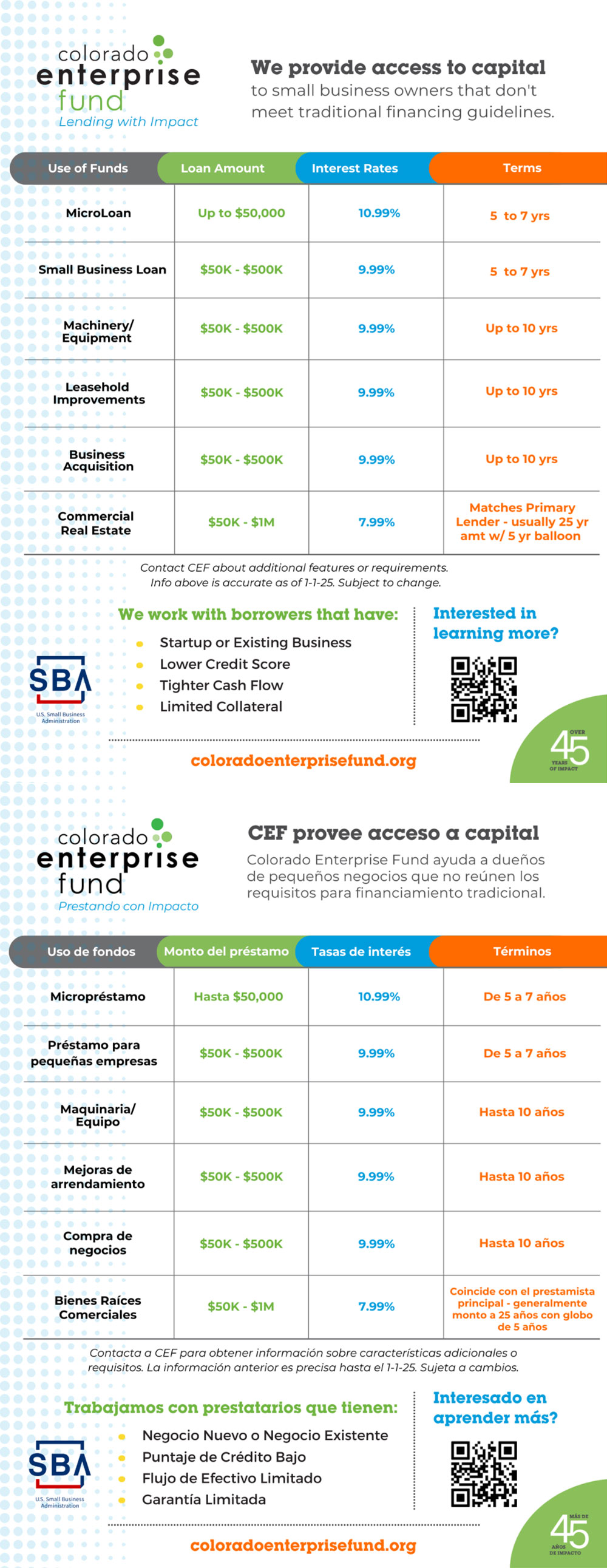Exploring How CDFIs and Financial Institutions Can Be Valuable Allies
Have you ever heard of a Community Development Financial Institution, CDFI for short? Most have not, not even in the financial world, but CDFIs are an integral part of providing access to financial services, affordable credit, and investment capital to individuals and small businesses underserved by traditional banks/credit unions. In fact, CDFIs must devote at least 60% of their resources to underserved communities. CDFIs are certified by the U.S. Treasury and there are about 15 in the state of Colorado. While CDFIs can come in different forms, this blog will focus on loan funds and how they work with financial institutions, not compete with them.
CDFI loan funds fill the gap between traditional financing and predatory lending. When a bank/credit union can’t qualify a small business owner for a loan, a CDFI is a viable option to consider. A CDFI will usually have fewer barriers to capital for your small business customer. CDFIs work with lower credit scores, limited collateral, longer loan terms, and even start-up businesses.
How can financial institutions and CDFIs partner together and be allies? First and foremost is an exchange of referrals- when banks and CDFIs tag-team to get borrowers to the best-suited lender. If a bank can’t greenlight the loan, you can refer the customer to a CDFI that will give your customer another chance at a fair lending loan. And when a borrower is “bankable” the CDFI will urge the customer towards the referring or traditional bank on future loan applications. It should be a two-way partnership! Banks & CDFIs can also join forces on a specific loan request. For instance, a bank may be comfortable with a commercial real estate loan, but there is some gap financing needed to make it all work. CDFIs are open to taking a secondary collateral position to get the deal done. Next, an odd twist -banks can lend money to CDFIs at a lower interest rate to help with the CDFI’s revolving loan funds. This is a strategic move and is usually done to help satisfy a bank’s Community Reinvestment Act (CRA) requirements. Therefore, it helps both parties achieve their objectives whether it is satisfying regulatory requirements or getting the necessary funds to then lend to small businesses. Finally, another, but not so common way to partner, is through New Market Tax Credits (NMTC). We could devote an entire blog to explaining NMTCs, but for simple terms, banks and CDFIs work together to encourage private investment on larger community development projects such as childcare facilities, healthcare facilities, or businesses that will create jobs in distressed communities.
Colorado Enterprise Fund (CEF), which is a non-profit small business lender, has been serving Colorado since 1976. CEF, like many CDFI loan funds, focuses on small business loans. CEF is also an SBA 7a lender (up to $350,000) under the Community Advantage program. The banking relationship, including deposits and merchant services, stays with the financial institution. CEF also provides free business navigation services (business coaching & education) to get borrowers the tools and resources they need to be successful and ultimately become “bankable.” While CEF takes great pride and joy in the over 7500 small businesses we have worked with, the goal, in essence, is to make borrowers leave CEF and go to mainstream financing when they are ready.
If you want to learn more about CDFIs or Colorado Enterprise Fund, we’d welcome the opportunity to talk to you. Simply get in touch with Alan Ramirez, CEF Director of Strategic Lending. We truly believe partnering is how we create a win-win-win for everyone and keep small businesses strong in Colorado!



